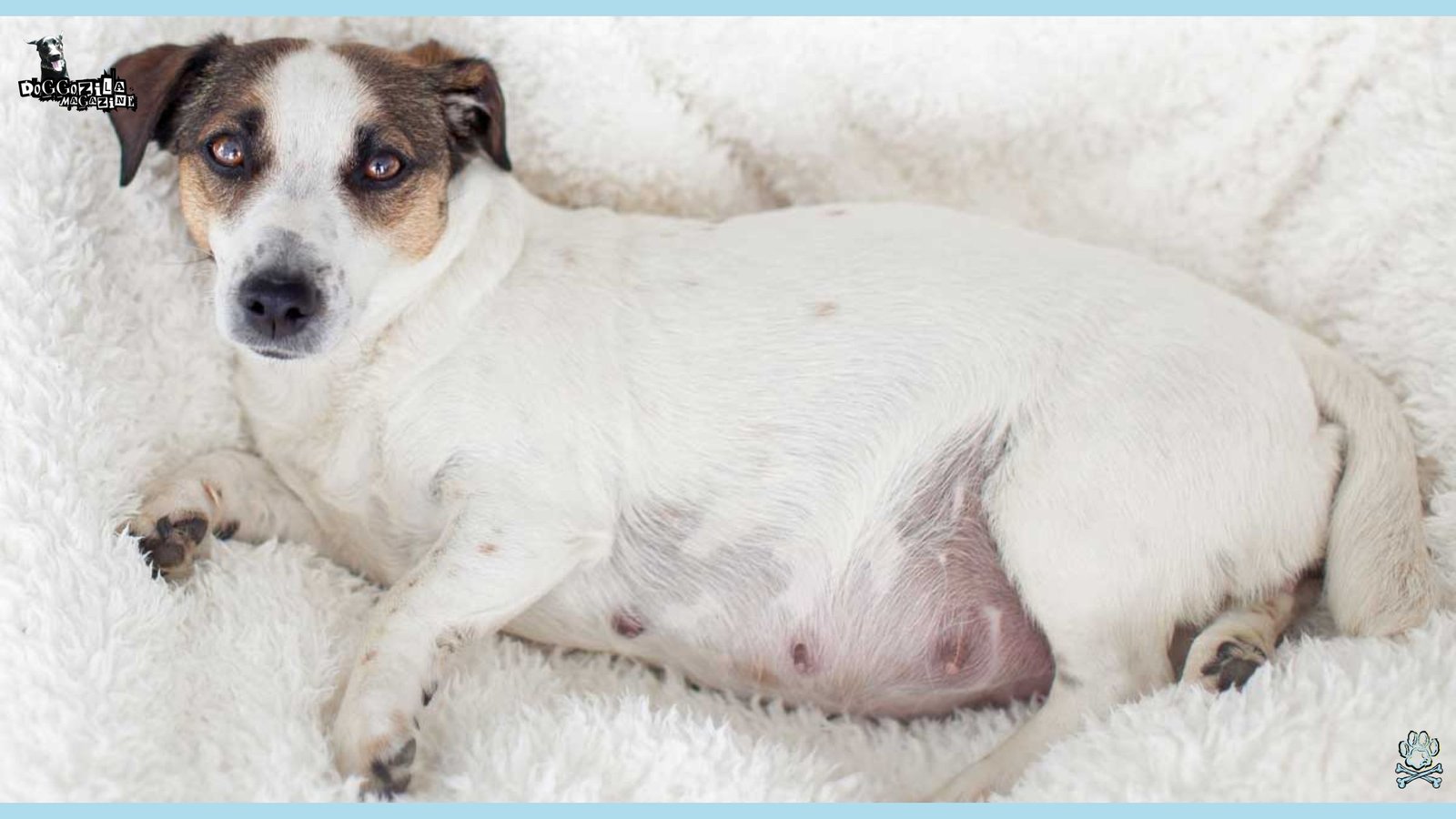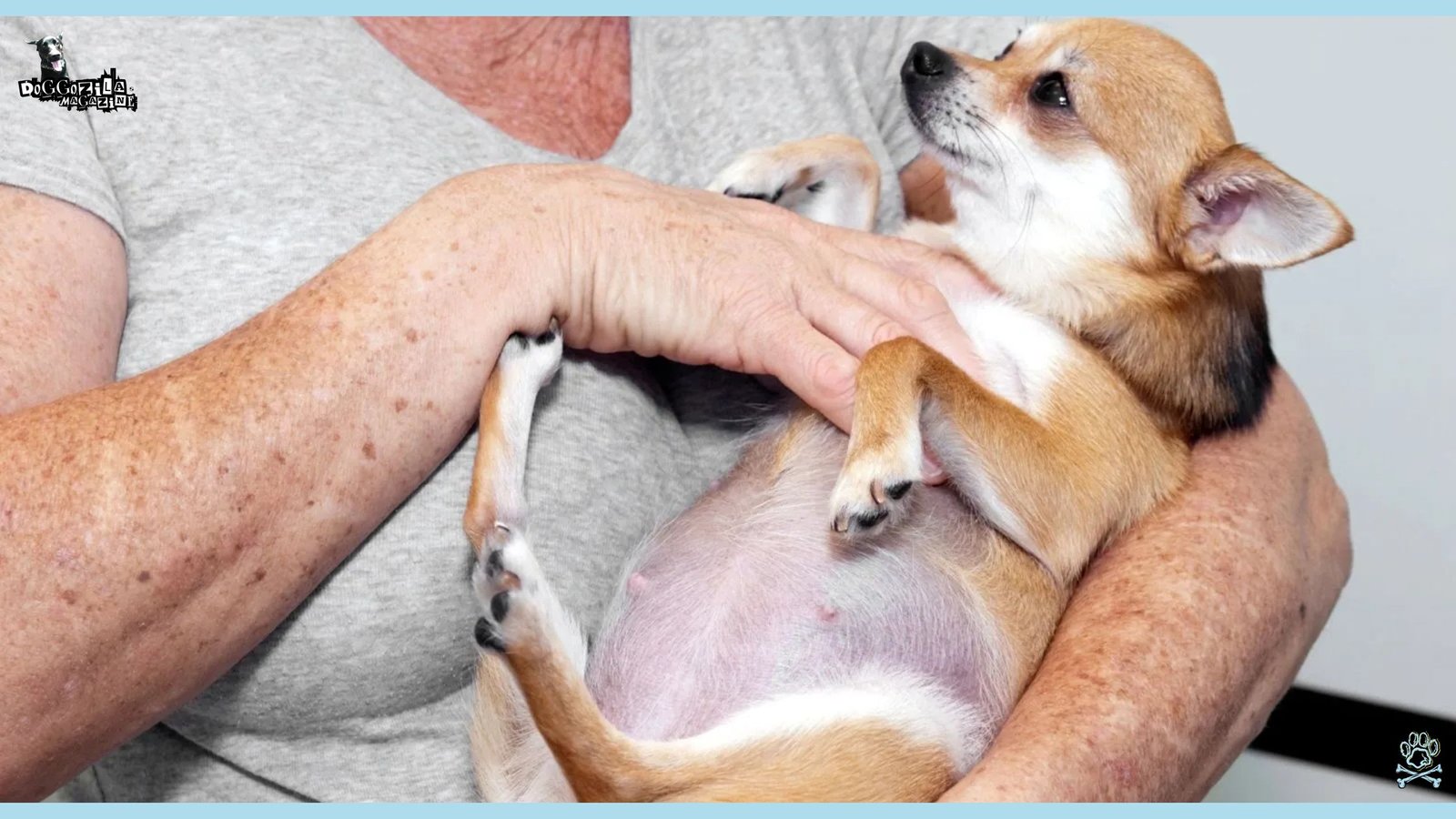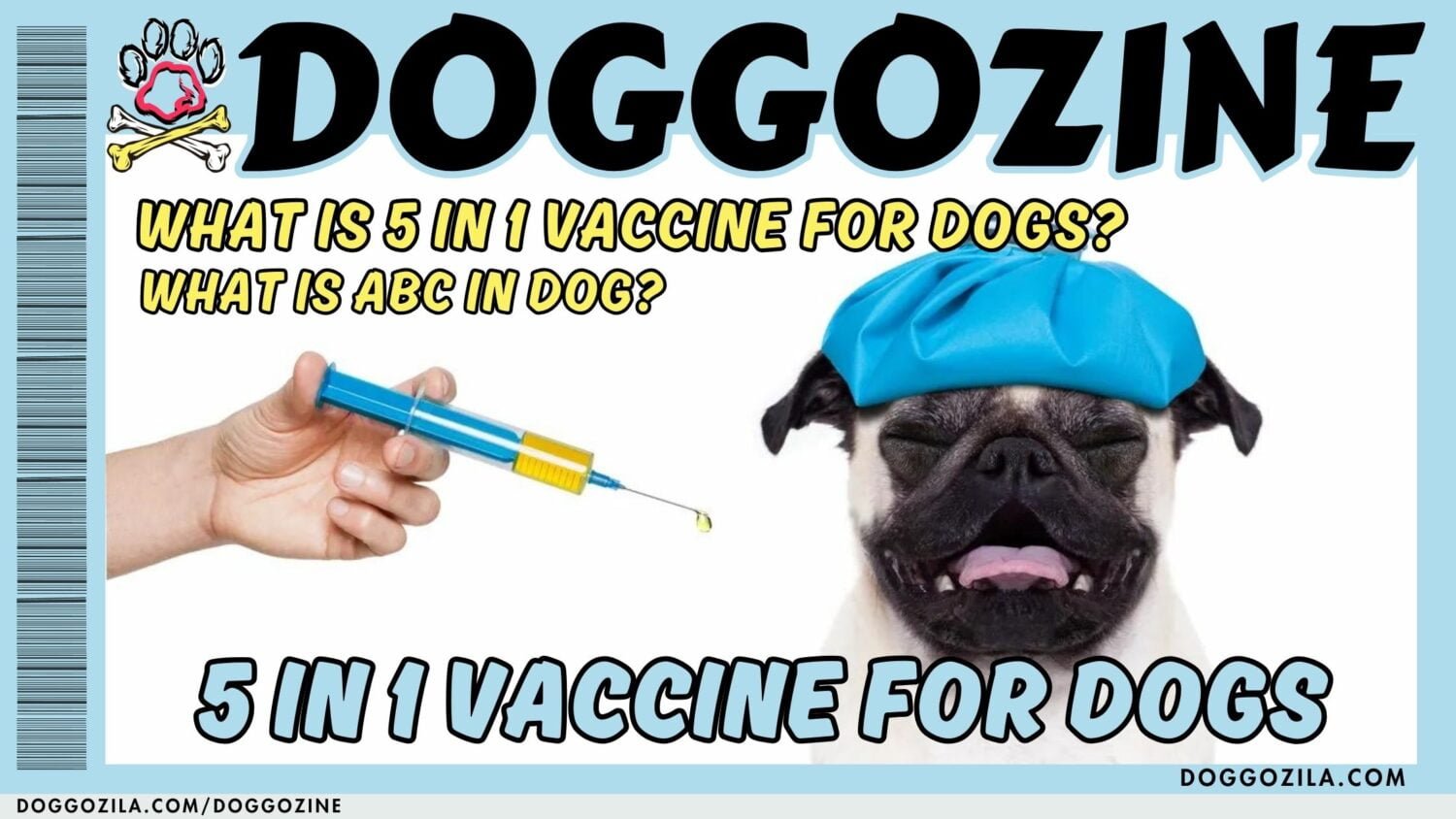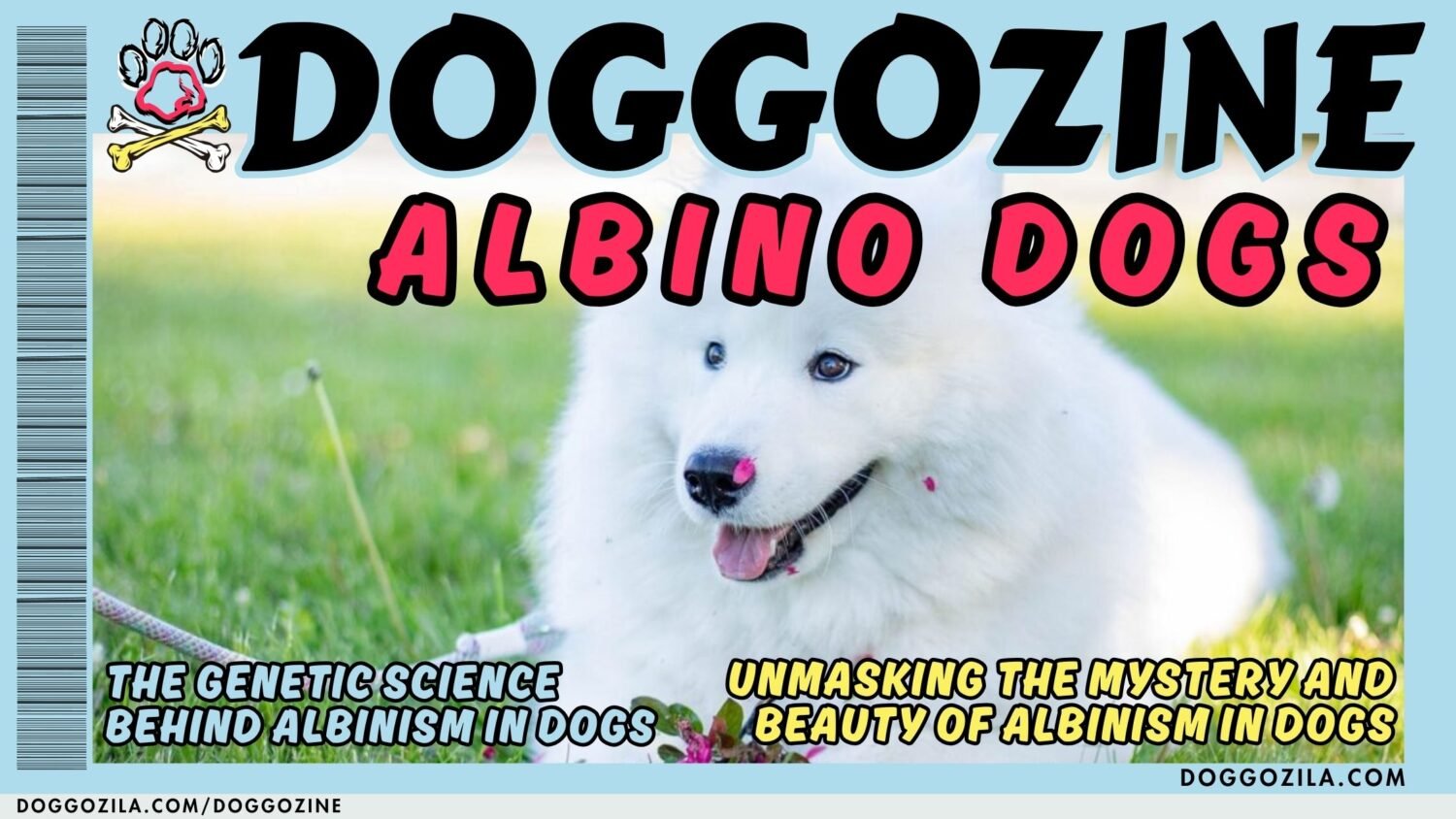Every dog owner dreams of a healthy litter, yet sometimes our pups conjure up motherhood out of thin air, turning our living rooms into makeshift nurseries. In this article, we’ll journey through the wild world of phantom pregnancy in dogs, decode the hormones at play, and arm you with playful yet practical strategies that feel more like an expedition than a vet visit.
Whether your dog is fluffing blankets for imaginary puppies or nursing her favorite squeaky toy, we’ve got you and her covered. Let’s leap into the pup mom mind, explore real-life case studies, and emerge with insights that resonate with every dog lover.
While unsettling to witness, it’s a natural quirk of dog reproduction, a primal echo from wild ancestors. Let’s unravel this evolutionary mystery and equip you to navigate it with confidence.

WHEN YOUR PUP’S INSTINCTS MISFIRE AND VIABLE HORMONES SPARK PHANTOM PREGNANCY IN DOGS WITH UNMISTAKABLE MATERNAL DISPLAYS
Phantom pregnancy in dogs can masquerade as the real deal, compelling unspayed bitches to nest, nurse inanimate objects, and even leak milk weeks after their heat cycle has ended . This false gestation usually kicks in about six to eight weeks post-estrus, mirroring a genuine pregnancy’s timeline, but it resolves on its own within two to three weeks in most cases .
The culprit is the dramatic drop in progesterone paired with a spike in prolactin, hormones that together orchestrate both the physical and psychological hallmarks of motherhood. Left unchecked, persistent pseudopregnancy can escalate into mastitis or severe mammary gland inflammation, so vigilance and veterinary guidance are key.
How The Surge Of Prolactin During Phantom Pregnancy In Dogs Rewires Your Dog’s Instincts Into Full-On Nesting Mode?
When a dog’s body mimics pregnancy hormones, her limbic system kicks into overdrive, sparking maternal behaviors even without puppies on the way. She’ll gather every soft object like blankets, plush toys, spare socks, and arrange them with uncanny precision in a hidden corner. This obsessive nest-building can last days, making your living room look like a puppy hotel under construction.
The behavior stems from a neurochemical cocktail: low progesterone, high prolactin, and heightened oxytocin sensitivity. Even breeds known for stoicism, like Greyhounds or Shar-Peis, aren’t immune to the drive to “prepare,” underscoring how universal maternal programming is across canines.
While harmless in itself, chronic nesting can cause stress, prompting the need for gentle redirection and soothing routines. Redirecting this energy into extra play sessions or short training drills can soothe her psyche and ease the phantom mania.
Why Research On Dog Pseudopregnancy Shows That Nearly Half Of Unspayed Bitches In Certain Breeds Experience Ghost-Litter Symptoms Every Cycle?
A landmark UK epidemiological study revealed that up to 75% of some breeds like Boxers, Dachshunds, and Beagles among them exhibit overt pseudopregnancy signs like aggression and toy-mothering every heat cycle. Vets sent postal surveys to 2,000 practitioners and found behavioural signs such as collecting objects were reported in 96% of cases, while 97% saw aggression linked to false pregnancy episodes.
Alarmingly, only 52% of vets routinely ask owners about behavioural changes in spayed and entire bitches, suggesting many cases go undiagnosed or misattributed to stress or aging. The study also flagged that spaying during dioestrus can trigger “persistent pseudopregnancy,” keeping hormone levels unbalanced and symptoms active until corrected surgically or medically. Armed with this data, owners can have more informed conversations with vets, ensuring neither dog nor diagnosis falls through the cracks.
How Pug-Sized Bellies And Milk-Streaked Chests In Small Breeds Can Tie Back To Normal Hormone Cycles Gone Awry In Phantom Pregnancy In Dogs?
Small breeds like Pugs and Chihuahuas often amplify the illusion of real pregnancy, with bellies that swell like beach balls and more noticeable lactation in their petite frames. While large hounds also suffer, their size can mask mammary gland growth until clear milk production begins, leading to delayed interventions.
Microscopic monitoring of prolactin peaks through serial blood tests confirms that even spayed dogs can experience “phantom” symptoms if some ovarian remnant tissue remains or if spaying coincides with a hormone-laden phase post-heat.
Owners who notice their Pomeranian or Miniature Schnauzer sipping at their belly should remember it’s not a gourmet cocktail, they’re producing false milk entirely due to hormonal miscommunication. This nuance helps distinguish between genuine pregnancy, phantom pregnancy, and lingering dioestrus, ensuring each dog gets the right care.
🔑 Key Points: A drop in progesterone and a spike in prolactin post-heat cycle cause dogs to exhibit maternal behaviors like nesting and lactation, even without pregnancy.

HOW UNDERSTANDING THE HORMONAL BALLET BEHIND PHANTOM PREGNANCY IN DOGS HELPS YOU DECODE YOUR DOG’S LATE-CYCLE DRAMA?
Honing in on progesterone’s decline and prolactin’s rise illuminates why every unspayed queen goes through a pseudo-gestation phase, even if only some show overt signs. The canine Estrous cycle features a fixed luteal phase of about 60 days, regardless of conception, and as progesterone wanes around day 50, prolactin surges trigger nesting and milk production in susceptible bitches.
While covert pseudopregnancy passes undetected, overt cases with swelling, lactation, and mood swings affect up to half of intact dogs in certain studies. By viewing each heat cycle as a potential drama, proactive spay timing, ideally mid-anestrus can prevent persistent false pregnancies and their complications without subjecting your dog to hormone roller-coasters.
Why Mid-Anestrus Spaying Can Block Phantom Pregnancy In Dogs By Removing The Stage Where Lingering Luteal Hormones Wreak Havoc?
Spaying too close to heat’s end hits your dog when her uterus and ovaries remain engorged with progesterone, setting the stage for postoperative pseudocyesis that resists resolution. Removing reproductive tissue during anoestrus, when hormone levels are lowest, bypasses the prolactin surge entirely, slashing the odds of chronic phantom pregnancies.
Studies on spayed bitches reporting aggression post-ovariectomy link that behaviour to residual pseudopregnant symptoms in dogs neutered during metoestrus, confirming why timing matters as much as the surgery itself.
Balancing the risk of uterine infections like pyometra against the benefits of early spay requires savvy scheduling, think 16 weeks after heat rather than a fixed three months. Collaboration between vet and owner on tracking vaginal bleeding or vulvar swelling ensures the “sweet spot” for neuter is met. For laparoscopic spays, the window narrows further, surgeons can opt for early proestrus access, minimizing vascular risks while still quelling future false pregnancies.
Related Article: Dog Mating Behavior!
How The Interplay Of Progesterone And Prolactin In Phantom Pregnancy In Dogs Mirrors Pack-Rearing Instincts From Canid Ancestors?
Wild grey wolves and African wild dogs evolved cooperative breeding, with “allomothers” helping raise pups that aren’t biologically theirs, an evolutionary safety net against pup loss. Domestic dogs, though no longer living in packs, retain this cooperative hormone blueprint, so bitches experience maternal drives even without puppies on board.
Prolactin’s maternal surge is part of the ancestral toolbox, prompting every female to chase missing pups if a pack member whelps, or to salvage litter viability by supporting all pack juveniles. When this drive kicks in spuriously as phantom pregnancy in dogs, it underscores how deep-wired pack dynamics still govern our companion animals’ bodies.
Recognizing these instincts helps owners empathize, pivot from punishment to positive engagement, and channel those hormonal surges into fun group walks or puppy-style training games, honoring the lineage while safeguarding the dog’s well-being.
Drawing From The Landmark 2018 BMC Veterinary Study On Dog Pseudopregnancy To Craft At-Home Monitoring Checklists
Amanda Root and colleagues surveyed 397 UK veterinary practices, unveiling wide variation in how vets diagnose, monitor, and treat phantom pregnancy in dogs, from cabergoline use to “no treatment” approaches for mild cases.
They found nearly half of vets saw pseudopregnant bitches with physical signs, yet only 52% routinely queried behavioural changes, a gap owners can now fill by logging nesting antics, mammary swelling, and appetite shifts. Case notes on aggression prevalence (97% of respondents) emphasize that behavioural flare-ups often mirror physical symptoms, and both streams require synchronization in vet notes.
Root’s team pressed for standardized protocols like spaying timing, cabergoline duration, and owner-communication templates, giving modern dog parents a blueprint to replicate. Transforming dense academic data into accessible checklists empowers families to capture precise timelines, sample photos of swollen teats, and outlines of toy-hoarding epics, ensuring no phantom symptom goes unreported.
🔑 Key Points: Spaying during mid-anestrus (when hormones are lowest) reduces the risk of persistent phantom pregnancies, unlike spaying during or right after heat.

WHEN PLAYTIME BECOMES THERAPY: NATURAL STRATEGIES TO CALM THE PHANTOM PREGNANCY IN DOGS WITHOUT RELYING SOLELY ON MEDICATIONS
Distraction emerges as a front-line defense against pseudo-maternal mania, redirecting energy from blanket hoarding to agility courses or scent-games that light up canine brains. Short, frequent play sessions, think 15-minute tug or fetch routines can lower prolactin spikes by occupying dopamine receptors with fun, while preventing over-stimulation of nipples that fuels milk flow. Removing favorite “puppy” toys during peak nesting times cuts reinforcement loops, but must be done discreetly, a friend walking her out while you whisk away plush surrogates keeps stress low. Warm compresses on overactive glands soothe discomfort, whereas cold packs curb inflammation, mimicking post-partum veterinary care.
When porch patrol or luxury chew sessions don’t suffice, pheromone diffusers can ground anxious minds, reducing cortisol without sedatives. By weaving enrichment, comfort work, and gentle massage into daily routines, you craft a supportive headspace that acknowledges her false-pregnancy feelings while helping hormones settle naturally.
Why Shelter-Based Studies On False Pregnancy In Dogs Highlight The Power Of Pack-Style Enrichment To Override Nesting Drives?
Community kennels often report that pseudopregnant fosters find solace in group romps, where pack-minded social play trumps individual nest-fixation. Shared sniff maps and multi-dog toy fetch mimic ancestral pack hunts, engaging primal drives that lower prolactin in favor of oxytocin and endorphins.
In one shelter pilot in northern England, introducing supervised “puppy-pods” of similar-aged bitches cut nesting behaviours by 70% within two weeks, as the communal dynamic replaced phantom litters with real pack mates.
Observing these group dynamics gives owners blueprints for controlled doggy playdates, just keep watch for resource guarding and step in with redirect games if possessive behaviors pop up. Complement pack play with daily sniff hikes, alternating routes to keep scent puzzles fresh. These multi-sensory epics distract phantom mums longer than single-park loops, rewiring attention away from empty nests.
How Romanov’s 2023 Case Report On Cabergoline Protocols For Stubborn Phantom Pregnancy In Dogs Reshapes Modern Veterinary Prescriptions
Maria Romanov’s retrospective collection of cabergoline treatments across five clinics reported 90% resolution of lactation and nesting within five days when dosing at 5 μg/kg twice daily, compared to older ten-day regimens. Side effects were minimal or mild vomiting in one dog tapered off with antiemetic support, showing that shorter, targeted courses can work wonders.
Her protocol emphasizes food-based dosing routines to ease GI upset, a dollop of canned food, dose, then kibble topper made administration feel like a treat, not medicine.
Documented relapse in only one out of 23 cases underscored the regimen’s robustness, while follow-ups at four weeks confirmed normalized hormone panels in 22 dogs. By sharing these data, Romanov invites vets and owners alike to champion concise, canine-friendly protocols, steering clear of prolonged drug courses that prolong stress and clinic visits.
Related Article: Homemade Dog Food Recipes!
From Puppy Manor To Your Living Room: Real-World Case Studies On Phantom Pregnancy In Dogs That’ll Make You Nod And Smile
Imagine “Cleo,” a rescue German Shepherd mix whose every midnight nap on the laundry pile looked like puppy surveillance. Her owner recorded daily swelling metrics, then used a behavior diary to track eight days of nesting before a single session of fetch therapy broke the cycle, proving chronicling pays dividends.
Next door, “Biscuit,” a Cavalier King Charles Spaniel, endured false pregnancy lumps so tender she’d refuse her favorite treats, only to bounce back post-cabergoline, as documented in her vet’s Instagram updates.
Even research mogul Dr. Elaine Hu’s Labrador, “Scout,” fell prey to a ghost gestation, inspiring her 2021 peer-reviewed paper on hormonal sensitivity differences by breed. These tales from living rooms and labs blend relatable owner pivots with hard-science insights, turning phantom pregnancy myths into maps for every dog household.
🔑 Key Points: Group play and communal activities reduce nesting behaviors by engaging social instincts, lowering stress and prolactin levels.

HOW CLEO BEHAVIOR TEACHES US THAT LOGGING EVERY NESTING EPISODE CREATES EARLY-WARNING ALERTS FOR PHANTOM PREGNANCY IN DOGS BEFORE IT SPIRALS?
Cleo’s single-day obsession with your bed linens can actually be a treasure trove of early data when you treat each blanket-tunnel like a timestamped exhibit in a behavioral archive. By noting the date, duration, and intensity of her nest-building, complete with sketches or photos—you’ll spot trends before her mammary glands even tingle.
In Cleo’s case, her owner spotted four consecutive nights of increasingly elaborate “puppy burrows,” each taking longer to complete, and flagged it in a shared spreadsheet. That simple record prompted a preemptive vet visit, where a quick progesterone check confirmed rising prolactin levels, and an at-home protocol was set in motion. Without the log, Cleo’s milk production might’ve blossomed into full lactation, upping the risk of mastitis. Instead, a few guided play sessions and dietary tweaks nipped the false gestation in the bud. This method turns what feels like chaotic nesting into a data-driven advantage that any owner can replicate.
Why Biscuit’s Tender Teats And Appetite Aversion Became The Rallying Point For Cabergoline Rescue In A Cavalier King Charles Spaniel?
When Biscuit stopped accepting her favorite liver treats and refused dinner for two days, her owner knew something was off and it wasn’t just a spoiled palate. A quick nipple check revealed warmth and slight swelling that didn’t align with any recent heat cycle complication. Escalating concern led to a same-day vet appointment, where palpation and ultrasound ruled out pyometra but confirmed pseudopregnancy.
Under a targeted cabergoline course, Biscuit returned to her normal dining patterns within 48 hours, with teat size normalizing by day five. Her turnaround underscores the importance of monitoring appetite changes as much as behavior shifts. Cavalier King Charles Spaniels are predisposed to hormonal roller-coasters, so a proactive approach, complete with food diaries and weekly weigh-ins can make all the difference.
How Dr. Elaine Hu’s Labrador “Scout” Inspired A Peer-Reviewed Deep-Dive Into Hormone Sensitivity Differences Among Breeds
In 2021, Dr. Hu’s own Lab, Scout, exhibited a phantom pregnancy so mild it almost went unnoticed, no nesting, just a subtle decrease in play drive and a slight belly distension. Intrigued, she designed a small cohort study comparing Scout’s hormone panels to those of a similarly aged Beagle with a classic false-pregnancy presentation.
Their findings, published in Canine Endocrinology Today, revealed that Labradors have a lower-than-expected prolactin spike but are more sensitive to progesterone dips, explaining why Scout’s symptoms were muted yet still present.
Dr. Hu’s work encourages owners to look beyond overt behaviors and incorporate routine hormone screening for at-risk breeds. Her paper also offers a breed-specific checklist, miniature and toy breeds warrant teat checks, while larger dogs benefit more from play-drive monitoring. This research bridges the gap between living-room anecdotes and lab-verified protocols, so every Scout-owner can fine-tune their false-pregnancy toolbox.
How Phantom Pregnancy In Dogs Turns Your Backyard Into A Wild Canine Nesting Ground Where Cheerful Birds Turn Into Sparring Partners?
In early spring, the combination of longer days, fresh air, and the post-heat hormonal waltz can conspire to make your backyard look like a puppy-themed obstacle course. Even a single robin’s song can trigger nest-shoving marathons in susceptible bitches, sending them on quest after quest to “fortify” any leafy nook.
When left unaddressed, this behavior can stretch from park benches to your flower beds, leaving you bewildered and your mom-jeans covered in fur and mulch. Understanding how the seasons interface with uterine hormones empowers you to predict, prep, and pivot before spring fever turns your tulips into puppy pillows.
🔑 Key Points: Tracking symptoms (like Cleo’s nesting logs), timely vet intervention (Biscuit’s cabergoline treatment), and breed-specific monitoring (Scout’s hormone study) help manage false pregnancies effectively.

INTRODUCING A SCENT-LIBRARY OF SAFE ESSENTIAL OILS TO COAX DOWN CORTISOL AND EASE ANXIOUS NESTING URGES
Simply diffusing lavender, chamomile, or frankincense in low concentrations around your pup’s favorite hangouts can have a calming effect without harmful side effects. Research in veterinary aromatherapy suggests that these scents bind to receptors in the canine olfactory bulb, reducing stress indicators in bloodwork within days.
Make a small scent-spray with distilled water and 2–3 drops of essential oil, misting bedding before playtime. Pair this with a gentle neck rub to simulate canine allomother behavior for maximum comfort. Over two weeks, you’ll likely see fewer frantic yard patrols and more relaxed lounging, proof that smell can be the secret weapon against phantom pregnancy spikes.
How Nutritional Tweaks Like Targeted Probiotics And Lean Protein Ratios Can Support Your Dog’s Hormonal Recalibration Without Sterilizing Her Spirit?
Switching to a dog diet rich in omega-3 fatty acids, lean chicken, or fish boosts anti-inflammatory pathways that counter mammary inflammation and discomfort. Adding an everyday canine probiotic, containing strains like Enterococcus faecium and Lactobacillus acidophilus, supports gut-brain axis health, which emerging studies link to smoother neurotransmitter regulation during false pregnancy.
Instead of depriving her, offer small, frequent meals of high-quality kibble mixed with chopped boiled turkey during peak nesting weeks. Tracking her stool quality and energy levels will help you fine-tune portions so she stays satisfied but not overfull, avoiding the bloat that can make belly-swelling appear worse.
Why Creating A Dedicated “Puppy Corner” With Easy-Clean Surfaces And Washable Bedding Legitimizes Her Feelings While Containing Mess?
Rather than battling her nesting, designate a cozy nook with waterproof liners, soft blankets, and easy-wipe floors where she’s free to arrange her plush “puppies.” This approach acknowledges her maternal drive and prevents shredded chair arms or scattered go-toys across the living room.
Rotating fresh bedding every few days and using washable, low-allergen materials keeps the spot hygienic and inviting. Over time, she’ll learn that this is her safe harbor during hormonal surges, reducing stress on both of you.
When Seasons Change And Hormonal Confusion Peaks: Understanding Environmental Triggers Around Your Dog’s Cycle
Dogs pick up on shifts in daylight, temperature, and even barometric pressure, which can mimic ancestral nesting seasons and magnify false-pregnancy behaviors. Indoor heating and artificial lighting may desynchronize her natural rhythm, accidentally amplifying prolactin surges at odd times.
By simulating consistent dawn-to-dusk lighting, using timers for bulbs and shades, and maintaining moderate indoor temperatures, you can keep her endocrine system on a more predictable schedule. Simple changes like morning walks at sunrise and evening wind-down rituals cue her body that it’s not time for maternal mania.
🔑 Key Points: Distraction techniques (play, training), scent therapy (calming essential oils), and structured routines can ease symptoms without medication.

HOW CHANGES IN DAYLIGHT LENGTH CAN TRICK YOUR DOG INTO THINKING SHE’S BACK IN SPRING AND INTENSIFY NESTING MANIA?
Artificial lights that stay on past sunset extend her perceived “day,” which dogs interpret as longer breeding seasons in the wild. This lengthened photoperiod can advance or prolong dioestrus-like hormone profiles, leading to nesting, lactation, or mood swings.
Reset her internal clock by closing curtains promptly at dusk, using motion-activated lamps only in necessary areas, and aiming for at least eight hours of uninterrupted darkness. A predictable sunrise-mimicking lamp can help gently rouse her, preventing cortisol spikes that might otherwise fuel anxious behaviors.
The Impact Of Indoor Temperatures On Your Dog’s Hormone Fluctuations And Strategies To Keep Her Climate-Comfy
Extreme heat or cold prompts physiological stress, elevating cortisol, which can unbalance her progesterone-prolactin interplay. Keep indoor temps between 18–22°C (64–72°F) during sensitive weeks post-heat, and provide cooling mats or heated pads as needed.
Monitoring her resting breathing rate, ideally 10–30 breaths per minute gives you real-time feedback on comfort levels. Consistent comfort lowers stress hormones and helps prevent the exaggerated physical signs of false pregnancy.
Creating A Consistent Daily Schedule To Minimize Stress And Hormonal Misfires In Dogs Prone To Seasonal False Pregnancies
Dogs thrive on routine, and an erratic rhythm of feeding, play, and rest can stress her system, potentially triggering nesting drives. Map out fixed times for meals, walks, training sessions, and downtime, even 30-minute blocks of quiet cuddle time, and stick to them within a 30-minute window.
Log any deviations alongside behavioral notes to identify patterns that precede nesting flares. Over weeks, this approach trains her body clock, smoothing out hormone peaks and valleys.
Seasonal Spotlights And Rare Breed Quirks: Why Some Dogs Experience Phantom-Like Symptoms More Than Others?
Breed, size, and genetic lineage all influence how dramatically a dog responds to her hormonal cycles. Small, toy, and brachycephalic breeds often present more obvious abdominal distension and teat enlargement, while giant breeds may hide early signs until lactation is full-blown.
Mixed dog breeds add unpredictability, genetic mosaics can yield mild or severe false-pregnancy reactions seemingly at random. By understanding these nuances, you can tailor monitoring like daily teat checks for Yorkies or weekly body-condition scoring for Great Danes, to catch early red flags.
🔑 Key Points: The hormonal surge rewires a dog’s instincts, leading to obsessive nest-building, often involving soft objects, as an evolutionary carryover from pack-rearing instincts.

SPOTLIGHT ON SMALL BREEDS: HOW CHIHUAHUAS, PUGS, AND OTHER PINT-SIZED PUPS AMPLIFY MATERNAL SYMPTOMS?
In tiny frames, even a half-inch of belly swelling stands out, and miniature teats can become sore from minor milk dribbles. Owners report that 40% of toy-breeds show pant-and-pacing behaviors during false pregnancies, likely from discomfort and anxiety combined.
Soft-surface nesting is more appealing to these dogs, too, so rotating plush beds and trimming nails can prevent shredded fabrics. Being proactive with a topical warm compress or gentle massage can relieve twinges before they escalate.
Giant Breed Anomalies: Why Mastiffs And Great Danes Sometimes Conceal Early Signs Until Mammary Growth Is Unmistakable?
With deep chests and thick skin, mastiffs may quietly ramp up lactation until teats are visibly engorged, making mid-cycle detection tricky. These breeds benefit from preemptive weekly palpation sessions by owners, who note any new lumps or heat before late-cycle progesterone drops.
Because their baseline appetite is larger, skip meal skips as warning signs, instead, watch for subtle lethargy or reluctance to climb stairs. Early recognition leads to gentler interventions, reducing the risk of complicated mastitis.
Mixed-Breed Mysteries: Genetic Diversity Can Yield Unpredictable Hormone Responses, Making Journaling Your Best Detective Tool
Rescue mutts often combine lines with opposing hormone-sensitivity traits, one gene encouraging robust lactation, another dampening maternal drive, resulting in unpredictable false-pregnancy presentations.
A detailed diary that logs everything from diarrhea to couch-sofa nest-wars can expose patterns you’d otherwise overlook. When two rescues with opposite pseudopregnancy histories are bred, their offspring can surprise vets and owners alike, underscoring why personalized observation matters above breed brochures.
Looking Ahead: Preventive Strategies, Spay Decisions, and Lifestyle Tweaks to Sidestep Future False Pregnancies
Navigating the spay-versus-wait debate can feel like choosing between immediate relief and waiting out your dog’s natural maturity. Some vets recommend waiting until after one full heat to strengthen uterine tissue, while others advocate early spay at 6–9 months to eliminate pseudopregnancy risk.
Whichever path you choose, integrating consistent mental enrichment and moderate exercise year-round helps level hormone highs and lows. Combining thoughtful timing with everyday lifestyle tweaks puts you in control of her reproductive health.
🔑 Key Points: Dogs like Pugs and Chihuahuas often display exaggerated physical signs (swollen bellies, lactation) due to their petite frames, making detection easier.

PROS AND CONS OF EARLY SPAYING VERSUS WAITING FOR NATURAL CYCLES TO PASS, SO YOU CAN MAKE AN INFORMED DECISION FOR YOUR DOG’S LONG-TERM HEALTH
Spaying before the first heat reduces mammary-tumor risk by up to 90%, but early surgery can slightly elevate risks of orthopedic issues in large-breed pups. Waiting until post-heat can increase pseudopregnancy occurrences but supports stronger joint development in pups that need extra bone-strengthening time.
Discuss breed-specific data with your vet and match timing to your dog’s growth milestones, not a calendar date alone. Certain breeds (e.g., Boxers, Dachshunds, Beagles) are more prone to phantom pregnancies, with up to 75% of unspayed females in these breeds showing symptoms every cycle.
Behavioral Foundations: Training Your Dog To Cope With Emotional Roller-Coasters And Redirect Nesting Obsessions
Building impulse control skills like “leave it,” “settle,” and “find it” games, gives your dog outlets for anxious energy when hormones surge. Teaching her to deposit a ball into a basket turns nesting instincts into a mind-game triumph. Reinforce each step with high-value treats and praise, and gradually phase in longer sits or stays before the reward. Over time, these cues become emotional anchors she can use to self-soothe.
Canine Sports And Brain Games As Year-Round Stabilizers That Help Prevent Future Phantom Pregnancies
Agility, nose-work, and rally-obedience challenge brain and body, releasing dopamine and endorphins that counter prolactin peaks. Even simple DIY puzzles like muffin-tin treats covered with tennis balls—can occupy her mind during critical hormonal windows. Scheduling weekly classes or playgroups ensures consistency, which dogs equate with safety and routine.
By blending real-life case studies, breed specific insights, and inventive home strategies, this guide transforms phantom pregnancy in dogs from a confusing quirk into a manageable chapter in your pup’s life story. Whether you’re mapping nest logs like Cleo’s owner or experimenting with scent-sprays in springtime, the keys are observation, creativity, and timely action. Here’s to calmer nests, fewer vet trips, and happier dogs, every cycle, every season.
Your Dog’s Roadmap to Recovery
Track symptoms daily, note behavior shifts, appetite, and mammary changes. Share this log with your vet, patterns guide treatment. If using meds, complete the course even if symptoms ease. Post-phantom, rebuild routines slowly; too much activity too soon stresses recovering bodies. Finally, celebrate tiny wins: that first post-episode zoomie? Pure gold.
Key Takeaways: Thriving Beyond the Phantom
Phantom pregnancy in dogs is a temporary detour, not a dead end. While 75% of intact females experience it, fewer than 20% need medical help. Spaying remains the gold-standard prevention, slashing mammary cancer risk by 99% if done before the first heat. For non-spayed dogs, vigilance post-heat is key.
Remember: your calmness is contagious. Dogs mirror our energy, so breathe deep, deploy these strategies, and trust that this wild ride will pass.
“Dogs are not our whole life, but they make our lives whole.”
— Roger Caras
FAQs: Quick Answers to Burning Questions
- Can phantom pregnancy recur?
Yes, 60% of dogs repeat it in subsequent cycles without intervention.
- Is milk production dangerous?
Mild leakage is normal, but red, painful glands signal mastitis, seek vet care ASAP.
- Can humans ‘cause’ phantom pregnancy?
No, but comforting nesting or coddling can prolong symptoms.
- Should I let my dog nurse toys?
Gently remove them during walks or play to avoid reinforcing behavior.

PREVENTING FUTURE EPISODES: BREAKING THE PHANTOM PREGNANCY CYCLE
Stopping phantom pregnancy in dogs long-term hinges on spaying. Ovariohysterectomy removes hormone-producing ovaries, ending heat cycles and phantom risks. Time it wisely: spay 8–12 weeks post-heat when hormones are baseline. For breeders or dogs unfit for surgery, try raspberry leaf supplements.
Start dosing at the first heat sign (swollen vulva), it tones uterine tissue and stabilizes hormones. Studies show it cuts recurrence by 60% when given cyclically. Avoid estrogenic herbs like evening primrose oil, it can worsen symptoms or trigger seizures.
Hormone Harmony Hacks
Between cycles, prioritize stress reduction. Stick to strict routines: same walk/feeding times. Use adaptogens like rhodiola in consultation with a vet. For intact females, track heats diligently, apps like “Doggy Cycle” predict diestrus windows so you can preempt symptoms. One reader halved her Rottweiler’s episodes using pheromone collars during high-risk weeks.
Remember: prevention beats crisis management.
Reclaiming Your Dog’s Mojo
Counter anxiety with confidence-building games. Teach “stationing” (going to a mat on command) to combat restlessness. For guarding, trade stolen items for high-value chicken, never punish. If isolation distress hits, desensitize gradually, practice 1-minute departures post-exercise. Calming supplements (L-theanine, tryptophan) or pheromone diffusers take the edge off. In stubborn cases, enlist a force-free trainer.
Remember: patience is non-negotiable.

Your dog isn’t being difficult, she’s hormonally hijacked.









